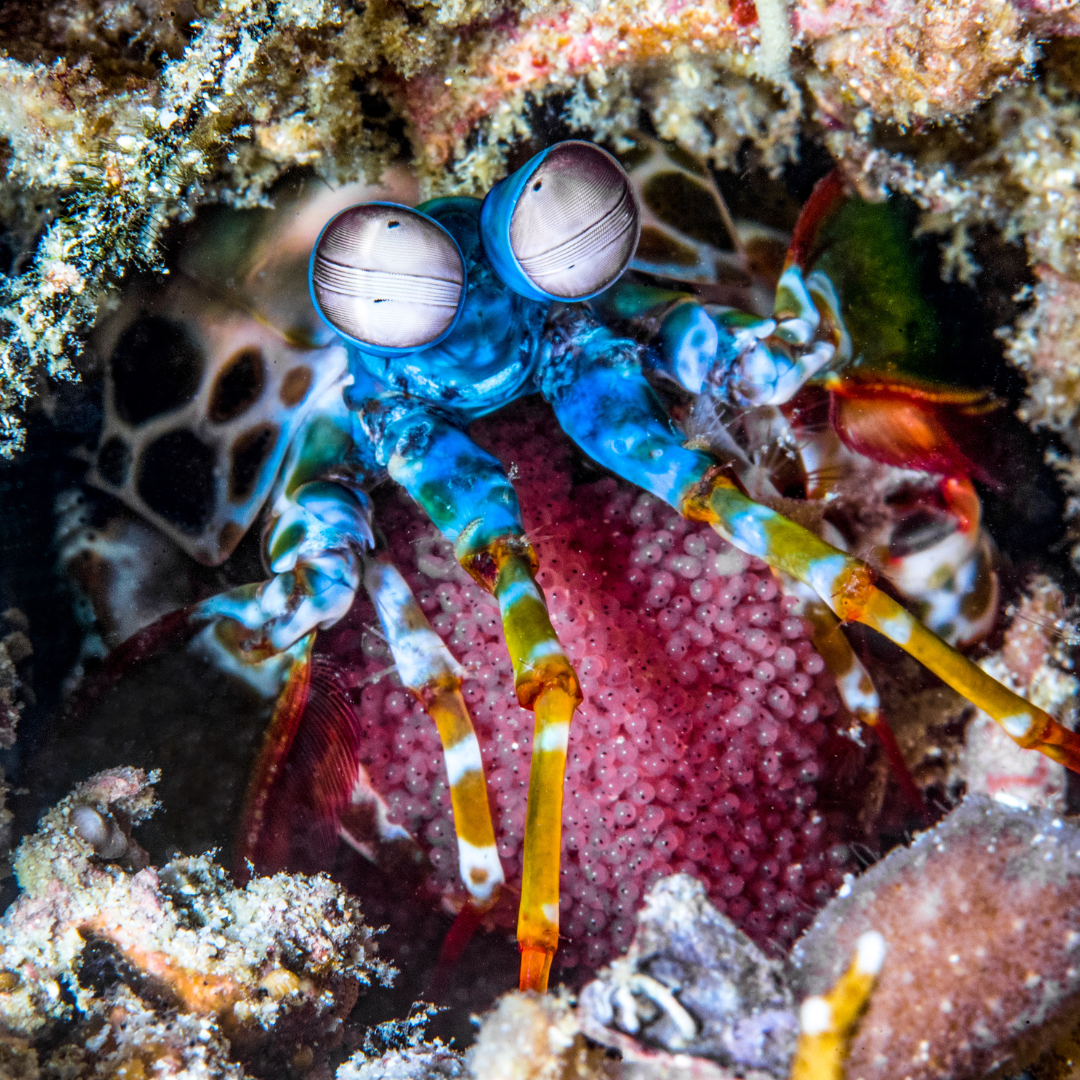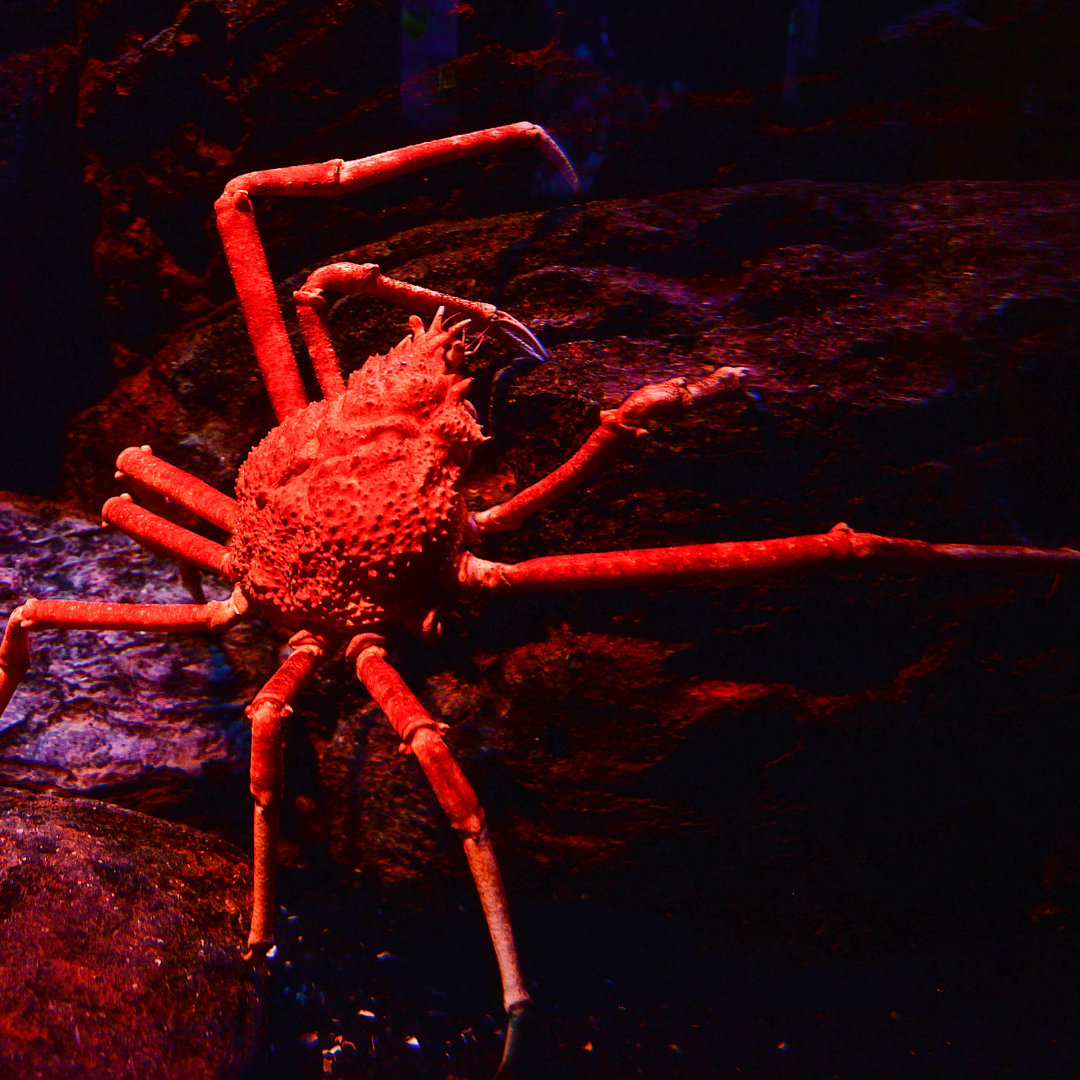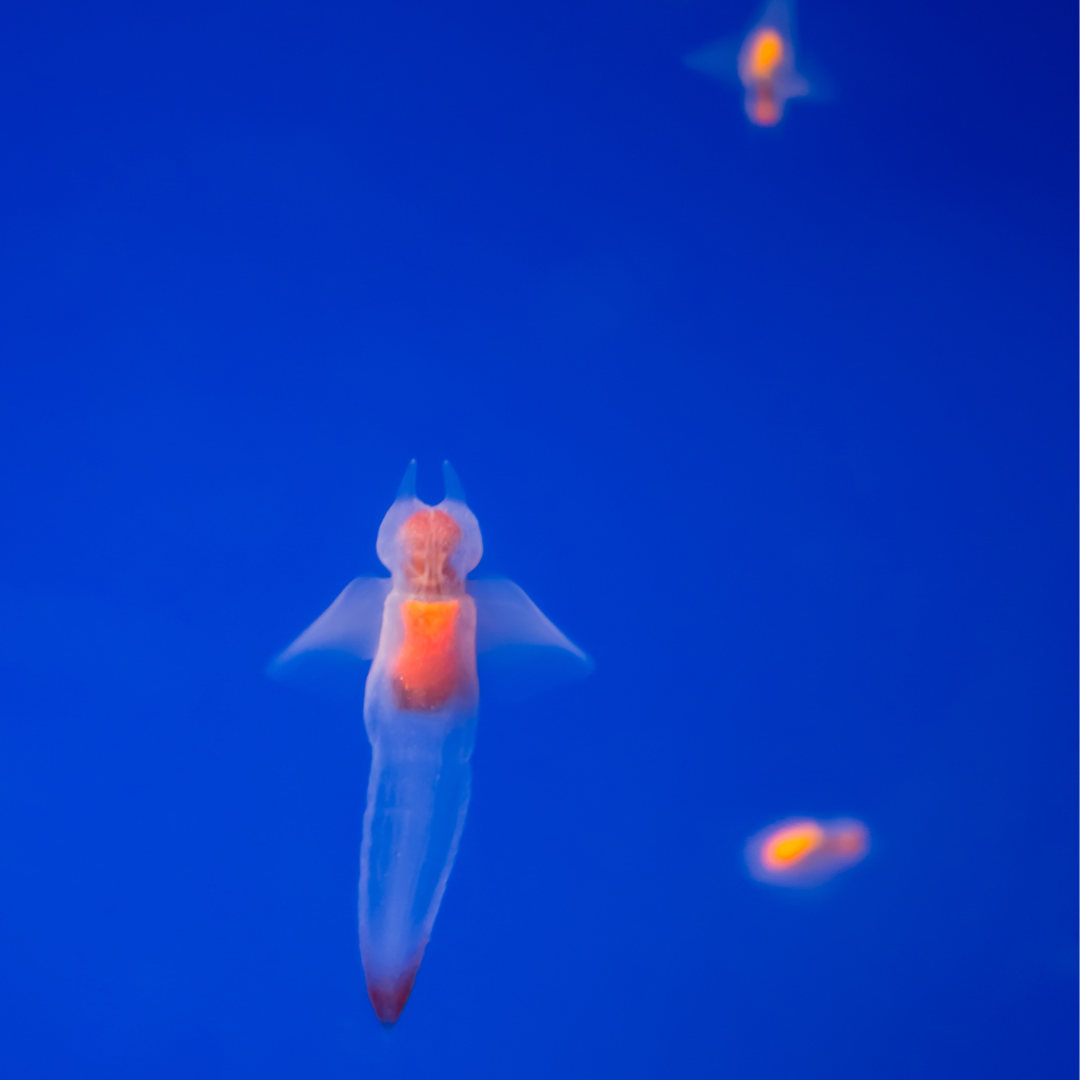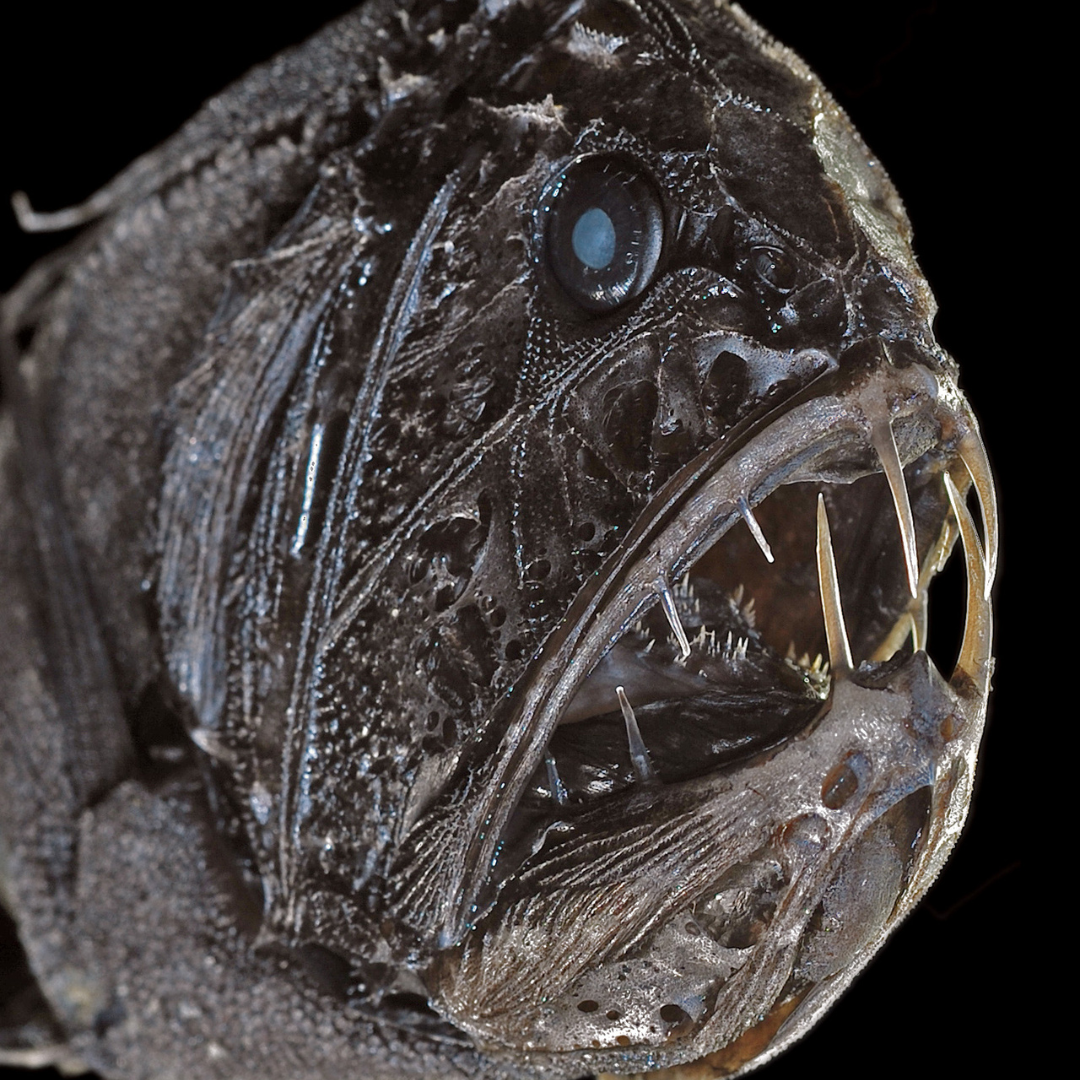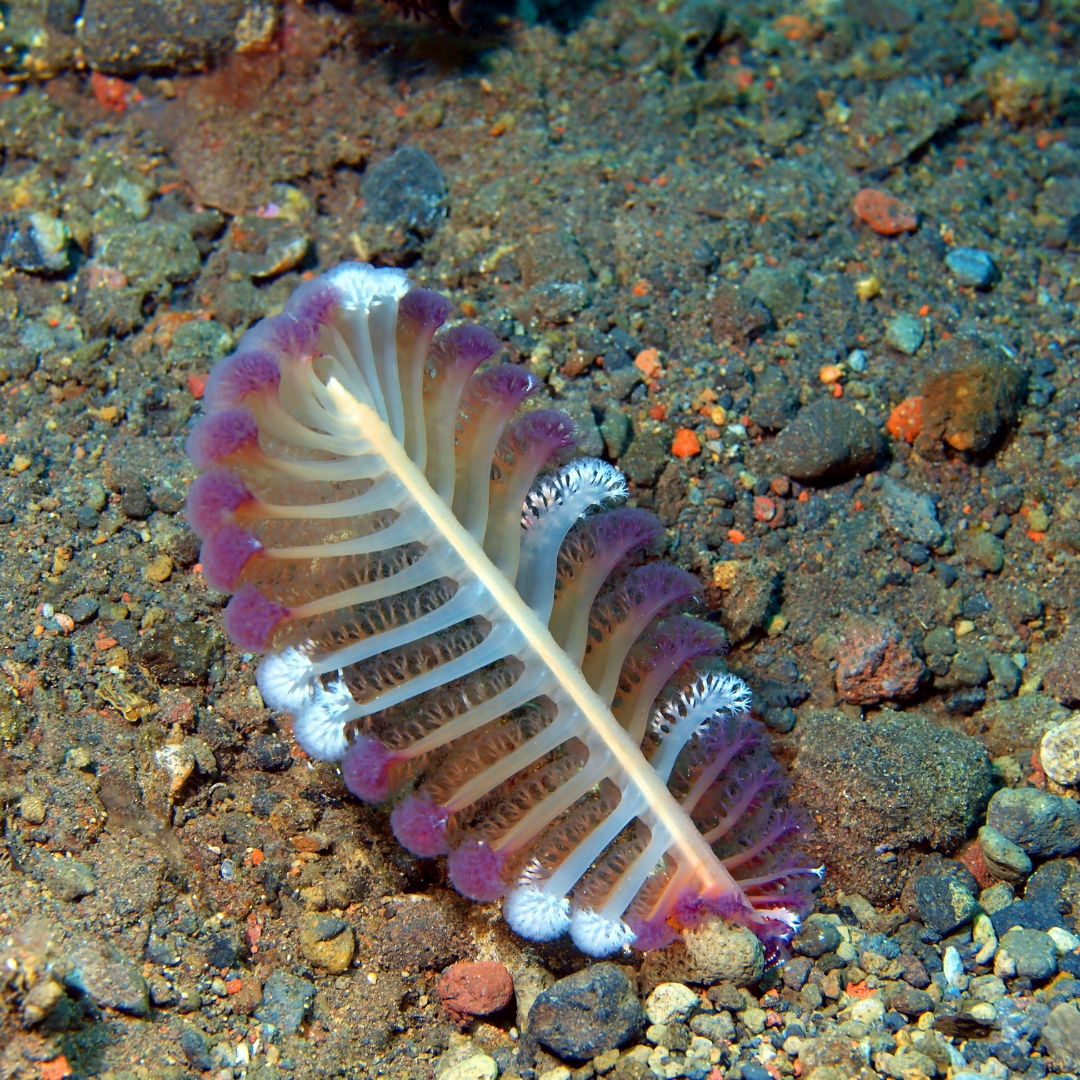Peacock Mantas Shrimp
This rainbow coloured crustacean adds a burst of colour to the murky ocean floor, sporting a shell of orange, green, red and blue hues. It may look pretty but it knows how to pack a punch. They use their club-like front paws to punch out their prey and keep enemies away. Their punch is so strong it can break glass!
Japanese spider crab
Japanese spider crabs are the largest crustaceans on earth, spanning almost 4 metres from the tip of one front claw to the other. Their round shells and long legs make them look like an oversized spider. Despite their dominant size, these gentle giants aren’t a ferocious predator. Rather they prefer scavenging for dead animals and plant matter, whilst slowing strolling across the seafloor.
Sea angel
These graceful swimming snails move through the ocean by flapping their winglike structures called parapodia, giving the appearance of an angel. They have small, transparent bodies and don’t have a shell. This allows you to see their internal organs, which offer a striking pink and orange hue. Sea angles use their finger like tentacles which come out of their head to catch their prey!
Fangtooth fish
This scary looking creature is amongst the deepest-living fish discovered. Fangtooth fish normally live around 2,000 metres in depth, but they have been found swimming at icy, crushing pressure depths of nearly 5,000 metres. Whilst they are small in size at approximately 16cm long, their teeth are the biggest in proportion to their body size of any fish.
Clown frogfish
These fish come in a variety of changing colours that help them camouflage into their reef homes and keep a low profile. These interesting fish feature a range of stripes, warts, spots and other abnormalities to allow them to impersonate and blend in with surrounding rocks and plants. How clever!
Sea pens
Named for their similarities to an old fashioned quill pen, sea pens are a colony of polyps working together for the survival of the whole. The primary polyp loses its tentacles and becomes the stalk of the sea pen, with a bulb at the base that anchors the sea pen to the muddy or sandy floor. The secondary polyps form the sea pens branches. When disturbed the sea pen forces water out of the colony, making it possible for the sea pen to retreat into its bulbous base for protection.
Red lipped batfish
Although capable of swimming this bizarre looking fish walks along the seabed in search of food, often perching to survey its surroundings. Its body colour is light brown and grey on its back with a white stomach. On the top, there are usually dark brown stripes from the head to the tail. The batfish has bright, red lips, that make it appear as though it is wearing lipstick!


